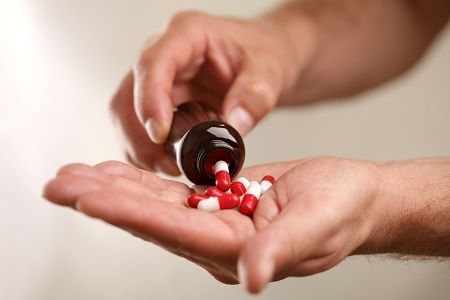Electronic Caps Report NSAID Rescue Medication Usage
A phase 3 study presented at PAINWeek 2016 in Las Vegas, Nevada, showed the benefits of using an electronic tracking system.

Rescue medications are used for a variety of conditions including asthma, hypertension, and arthritis. However, researchers have to rely on pill count and patient reports to figure out how often the drugs are used. A phase 3 study presented at PAINWeek 2016 in Las Vegas, Nevada, showed the benefits of using an electronic tracking system.
A collaborative team of physicians from California, New York, and Pennsylvania worked on this analysis. The goal was to find how well the Medication Event Monitoring Systems (MEMS) in recording data from patients with either hip or knee osteoarthritis.
The 403 participants, who were at least 40 years of age, were chronic users of non-steroidal anti-inflammatory drugs (NSAIDs) and/or acetaminophen. For 12 weeks, patients were randomly assigned to receive low-dose SoluMatrix meloxicam (Vivlodex) 5 mg, 10 mg, or placebo once per day. The participants also had access to rescue medication, acetaminophen 500 mg every four to six hours as needed. The MEMS cap recorded the day and time each time that the bottle was opened.
- MD Magazine is on Facebook, Twitter, Instagram, and LinkedIn!
During the study period, patients who were taking either meloxicam 5 mg or 10 mg ended up taking less rescue medication than those on the placebo. On average, the daily rescue medication dosage was 313.6 mg in the meloxicam 10 mg group, 326.2 mg in the meloxicam 5 mg group, and 464.1 mg in the placebo group. Rescue event days averaged at 23.5, 25.3, and 33.9, respectively.
“A dose-related trend was observed in the average number of rescue events per patient over 12 weeks by time of day,” the authors explained. Those numbers for 10 mg, 5 mg, and placebo, respectively, were: >24:00-6:00: 1.9, 2.1 and 3.9; >6:00-12:00: 7.6, 7.6 and 13.5; >12:00-18:00: 6.5, 7.2 and 12.0; and >18:00-24:00: 8.0, 10.1 and 15.3.
The team concluded that the MEMS caps were able to gather real-time data and important insight into rescue events for patients with osteoarthritis.
Also on MD Magazine >>> More News from PAINWeek 2016 in Las Vegas